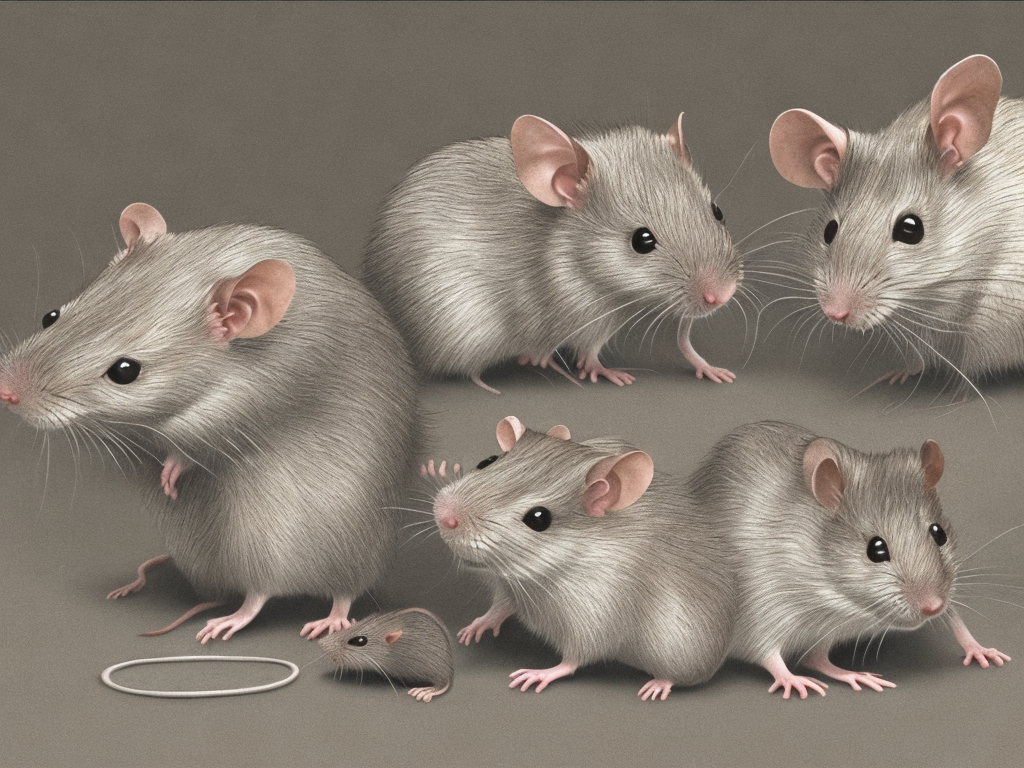
Rats and mice are two common rodent species that are often misunderstood and mistaken for one another. While they may have some similarities, they also have distinct differences in their appearance, behavior, habitat, and impact on human health. In this article, we will explore the key differences between rats and mice.
One of the most obvious differences between rats and mice is their size. Rats are generally larger compared to mice. While mice typically measure between 2.5 to 4 inches in length, rats can grow up to 10 inches long, excluding their tail. This size difference extends to their weight as well, with rats usually weighing between 7 to 18 ounces, whereas mice weigh around 0.5 to 1 ounce. The size disparity between rats and mice is often a significant factor in distinguishing them.
Another distinguishing factor between rats and mice is their physical appearance. Rats tend to have a more robust and elongated body, with a wedge-shaped head and a thick, hairless tail. Their ears are relatively small compared to their body size, and they have long, sharp incisors that continuously grow throughout their life. Mice, on the other hand, have a small and slender body, with a triangular-shaped head and large ears. Their tails are long and thin, covered in hair. Mice also possess prominent, rounded ears, and their incisors are relatively smaller compared to that of rats.
The behavior of rats and mice also exhibits noticeable differences. Rats are generally more cautious and intelligent. They are known to be neophobic, which means they have a fear of new things and are hesitant to approach unfamiliar objects in their environment. This behavior makes rats more difficult to trap or control compared to mice. On the other hand, mice are curious and exploratory creatures. They are more likely to venture into new areas, including human dwellings, in search of food and shelter. Their curiosity often leads them to be more easily caught or controlled through various trapping methods.
When it comes to habitat, rats and mice display different preferences. Rats are adaptive and can thrive in various environments, including sewers, agricultural areas, urban settings, and even forests. They are excellent swimmers and climbers, which allows them to access different locations. Rats commonly build burrows for nesting and prefer to live in groups or colonies. Mice, on the other hand, are more inclined to live indoors, seeking warm and sheltered areas. They frequently make their nests in walls, attics, basements, and other secluded spaces in residential or commercial buildings. Mice are more likely to infest homes, as they can easily squeeze through small openings and gaps in the structure.
Furthermore, rats and mice differ in their impact on human health. Both rodents are notorious carriers of diseases and can contaminate food and water sources. However, due to rats' larger size and ability to travel greater distances, they can spread disease more easily than mice. Rats are known to carry and transmit diseases such as Leptospirosis, Hantavirus, Salmonellosis, and even the bubonic plague. Mice, on the other hand, are known carriers of diseases like Lymphocytic choriomeningitis (LCMV) and Hantavirus Pulmonary Syndrome (HPS). Additionally, both rats and mice produce allergens, including dander, urine, and droppings, which can trigger or worsen allergic reactions and respiratory issues in humans.
In conclusion, while rats and mice belong to the same rodent family and share some similarities, there are several notable differences between the two species. Rats are larger, have a more robust body, and tend to be more cautious and difficult to control. They are adaptive and can thrive in a wide range of environments. Mice, on the other hand, are smaller, more slender, and curious creatures. They are more likely to infest indoor spaces and are relatively easier to catch or control. Rats have a broader impact on human health due to their ability to carry and spread diseases over larger areas. While both rodents pose risks to human health, understanding the differences between the two can help with proper identification and effective management strategies.
 Self-Instruct
Self-Instruct